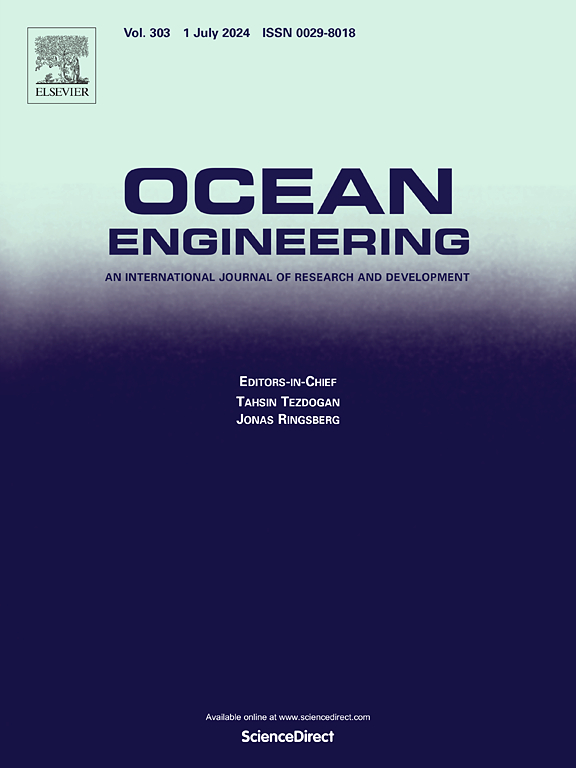海洋环境中基于膜结构的浮动光伏系统的水动力特性
IF 4.6
2区 工程技术
Q1 ENGINEERING, CIVIL
引用次数: 0
摘要
随着全球对可持续能源的追求,浮动光伏(FPV)系统成为创新的焦点。作为一种新型 FPV 系统,膜结构因其设计轻巧、经济可行等优点,具有广泛应用的巨大潜力。本文从 Ocean Sun 的膜原型中汲取灵感,设计了一个膜结构研究模型。初始阶段包括频域研究。为实验室实验精心制作了一个 1:40 的缩小模型,用于与数值模拟进行比较。最终,实验缩放模型的振幅响应函数与数值模拟缩放模型和全尺寸模型的振幅响应函数非常吻合。此外,还通过数值模拟进行了时域研究,以分析原型在波浪和水流联合加载下的水动力响应。研究结果表明,膜结构具有良好的适航性和稳定性。与工作海况相比,生存海况下的结构运动响应和系泊力明显增大。值得注意的是,系泊力的增加最为明显,超过了两倍的关系。随后,六项相关研究对膜结构和 FPV 平台进行了对比分析。结果发现,这些结构在 RAO 和波浪相互作用方面表现出的趋势与膜结构观察到的趋势基本一致。本文章由计算机程序翻译,如有差异,请以英文原文为准。
Hydrodynamic characteristics of floating photovoltaic systems based on membrane structures in maritime environment
As the world confronts the pursuit of sustainable energy sources, floating photovoltaic (FPV) systems emerge as a focal point of innovation. As a novel FPV system, the membrane structure, owing to its advantages of lightweight design and economic feasibility, presents significant potential for widespread applications. Drawing inspiration from Ocean Sun's membrane prototype, this article devised a research model for the membrane structure. The initial phase involved a frequency-domain study. A 1:40 scale-down model was meticulously crafted for laboratory experiments, intended for comparison with numerical simulations. Conclusively, the amplitude response functions of the experimental scaled model aligned well with those of the numerically simulated scaled model and full-scale model. Moving forward, a time-domain study was conducted through numerical simulations to analyze the hydrodynamic responses of the prototype under combined wave and current loading. The findings revealed that the membrane structure have good seakeeping and stability. In comparison to the working sea state, the structural motion responses and mooring forces under survival sea state were significantly amplified. Notably, the mooring forces exhibited the most pronounced increase, surpassing a two-fold relationship. Subsequently, comparative analyses were conducted between membrane structures and FPV platforms in six relevant studies. It was found that the trends in RAO and wave interactions exhibited by these structures generally align with those observed in membrane structures.
求助全文
通过发布文献求助,成功后即可免费获取论文全文。
去求助
来源期刊

Ocean Engineering
工程技术-工程:大洋
CiteScore
7.30
自引率
34.00%
发文量
2379
审稿时长
8.1 months
期刊介绍:
Ocean Engineering provides a medium for the publication of original research and development work in the field of ocean engineering. Ocean Engineering seeks papers in the following topics.
 求助内容:
求助内容: 应助结果提醒方式:
应助结果提醒方式:


